- cross-posted to:
- [email protected]
- cross-posted to:
- [email protected]
cross-posted from: https://lemmy.world/post/1287820
Heya! I thought I’d mention that I’ve been doing a bunch of development on the optical Timex Datalink watches! I have been carefully sniffing data from the original Timex software with a logic analyzer, and have fully reverse engineered every Datalink protocol, the serial Notebook Adapter, and even the CRT syncing graphics! This means that every Datalink device, including every Timex and Motorola watch, all PDAs, and the funny e-BRAIN talking toy is supported!
For those that aren’t familiar, the Timex Datalink is a watch that was introduced in 1994 that is essentially a small PDA on your wrist. The early models (supported by this software) have an optical sensor on the top of the face that receives data via visible light.
The original data transfer method involves drawing patterns of lines on a CRT monitor for the watch to receive with the optical sensor. CRTs use electron beams that draw scan lines one-by-one from top to bottom, then it returns to the top and repeats for the next frame. This means that the electron guns turn on when its drawing a white line, and and turn off when its drawing the black background. This produces flashing light as the graphics are drawn, which is ultimately received by the optical sensor and decoded by the Timex Datalink device.
For laptop users, Timex also offered the Datalink Notebook Adapter. Instead of using a CRT monitor, the Notebook Adapter simply flashed a single LED light. This adapter is fully supported by the Timex Datalink software, and sends the same data as a CRT.
However, Notebook Adapters are rare and expensive now, so I reverse-engineered one! Here’s my timex_datalink_client Ruby library communicating with my DIY Datalink Notebook Adapter to emit data to a Timex Datalink watch!
And if you want to try the reverse-engineered CRT graphics, I got you covered! I reverse-engineered that, too!
As a fun tidbit, these watches are flight certified by NASA and is one of four watches qualified by NASA for space travel! Here’s a shot of James H. Newman wearing a Datalink watch on the Space Shuttle for STS-88!
Here is my Ruby library with all options for all watches reverse-engineered into a tidy model-based syntax!
Here is a Notebook Adapter emulator that is fully compatible with all Timex software on old and new machines, and also works with my library too!
And if you have an anchor that happens to contain an electron beam and wanna try it, here’s my library for drawing graphics to a CRT to transfer data!
This has all been done over months of careful effort with lots of VMs, Pentium machines, Windows 98SE, logic analyzers, and solving data puzzles little by little. On July 4th, 2023, I’m proud to announce that I have reverse-engineered every Datalink device with 100% feature compatibility! This is definitely a passion project by all means, and I thought I’d pop in and share this passion with y’all!
Enjoy!


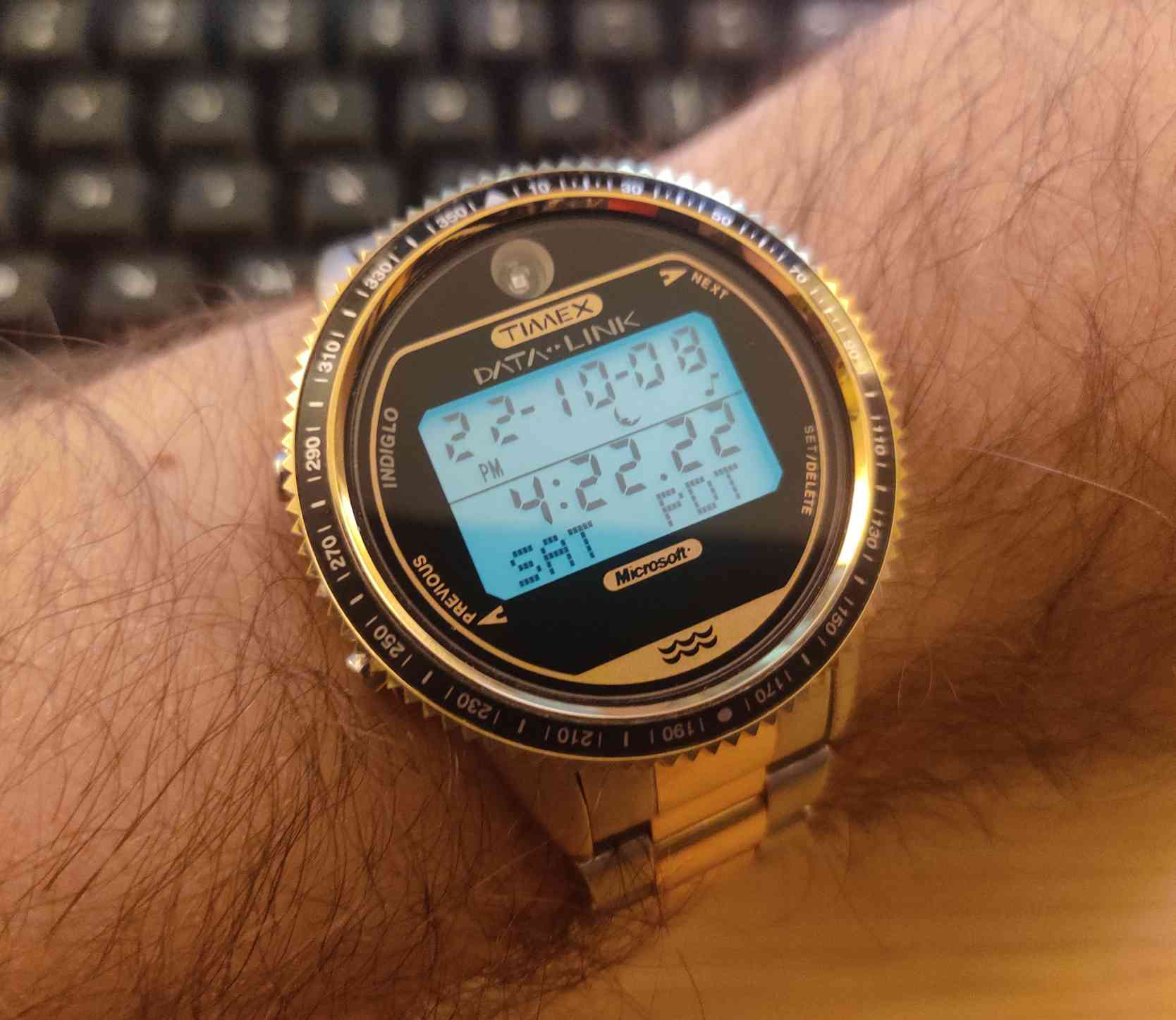
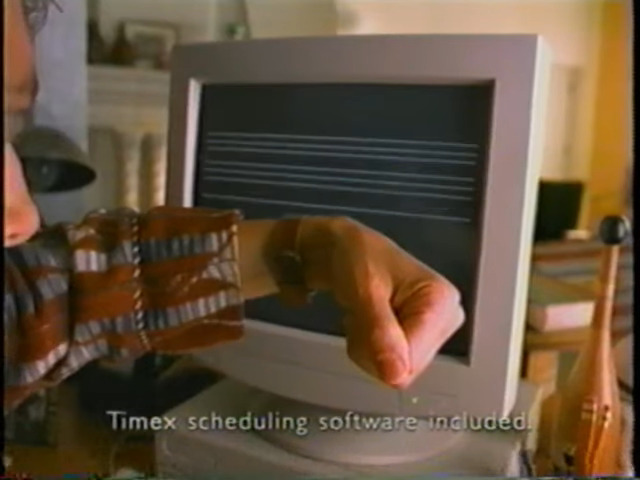
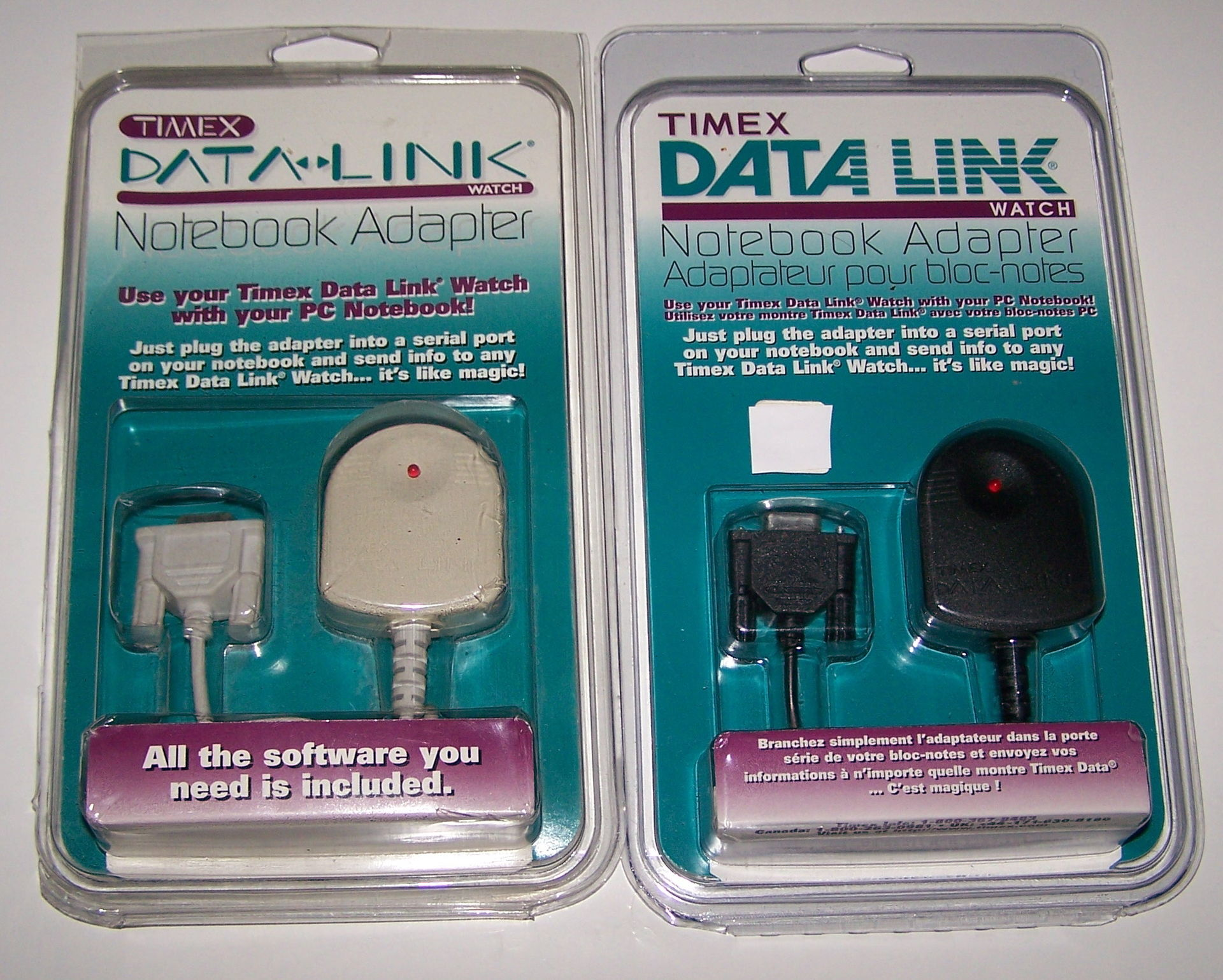
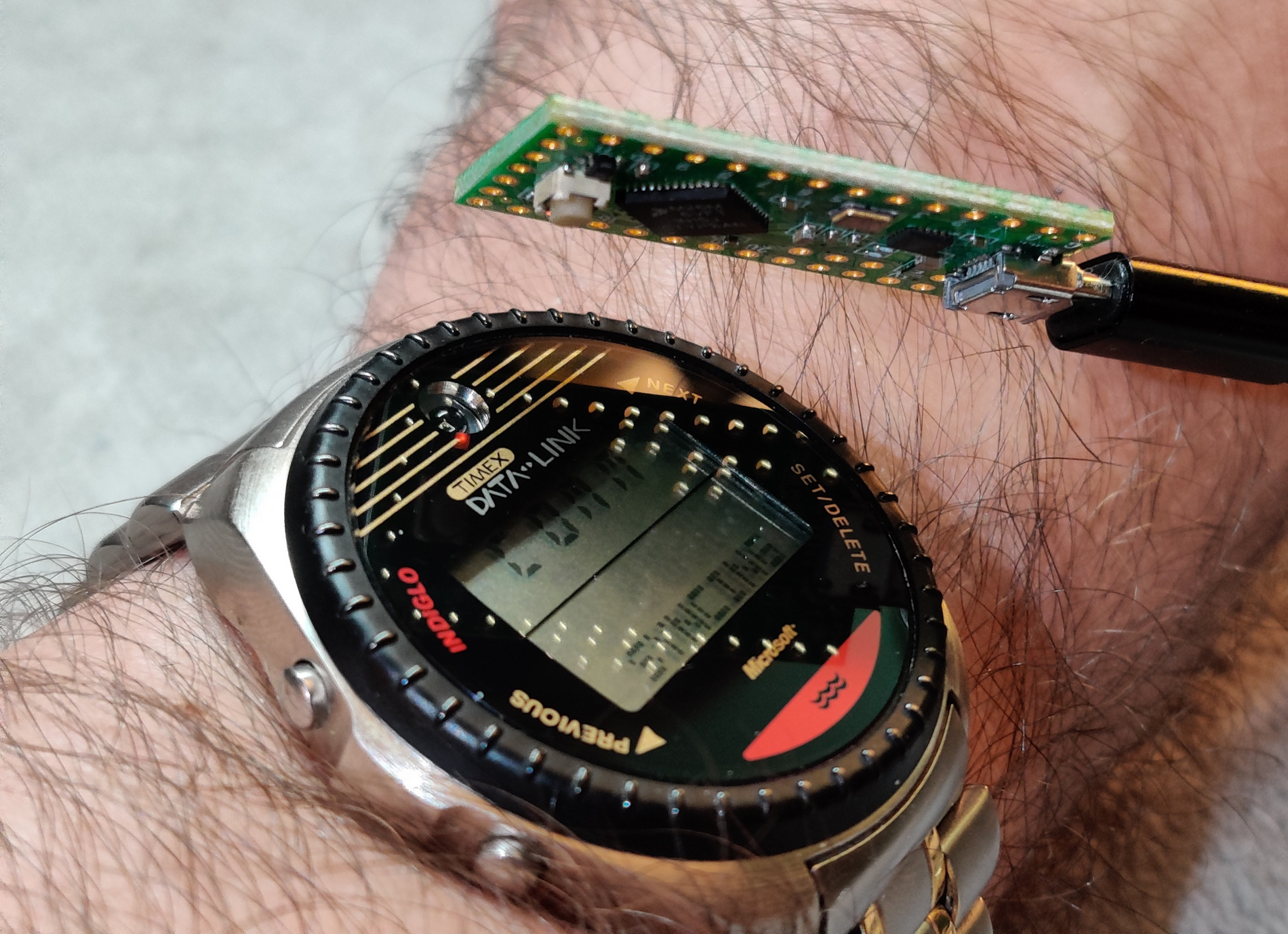
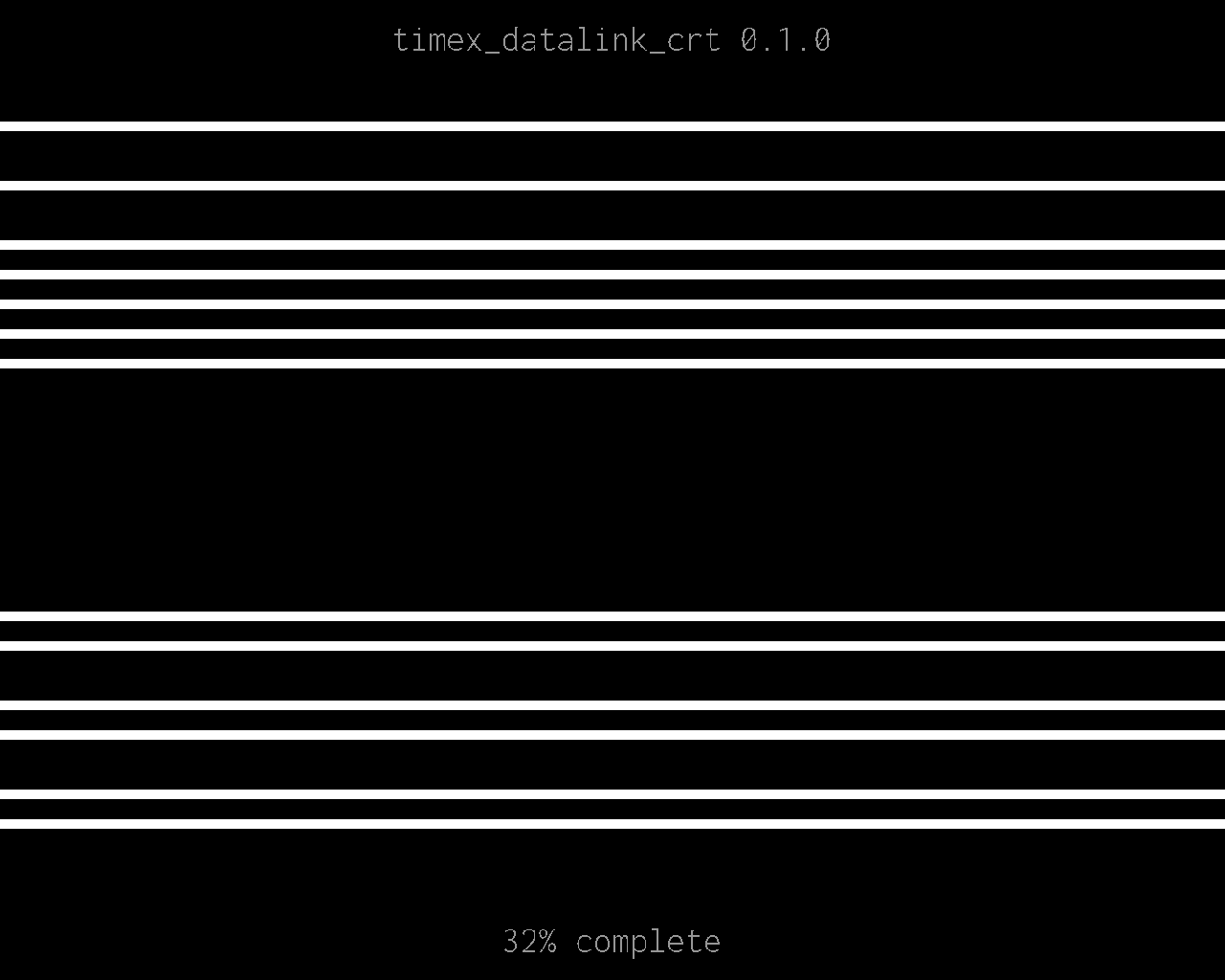
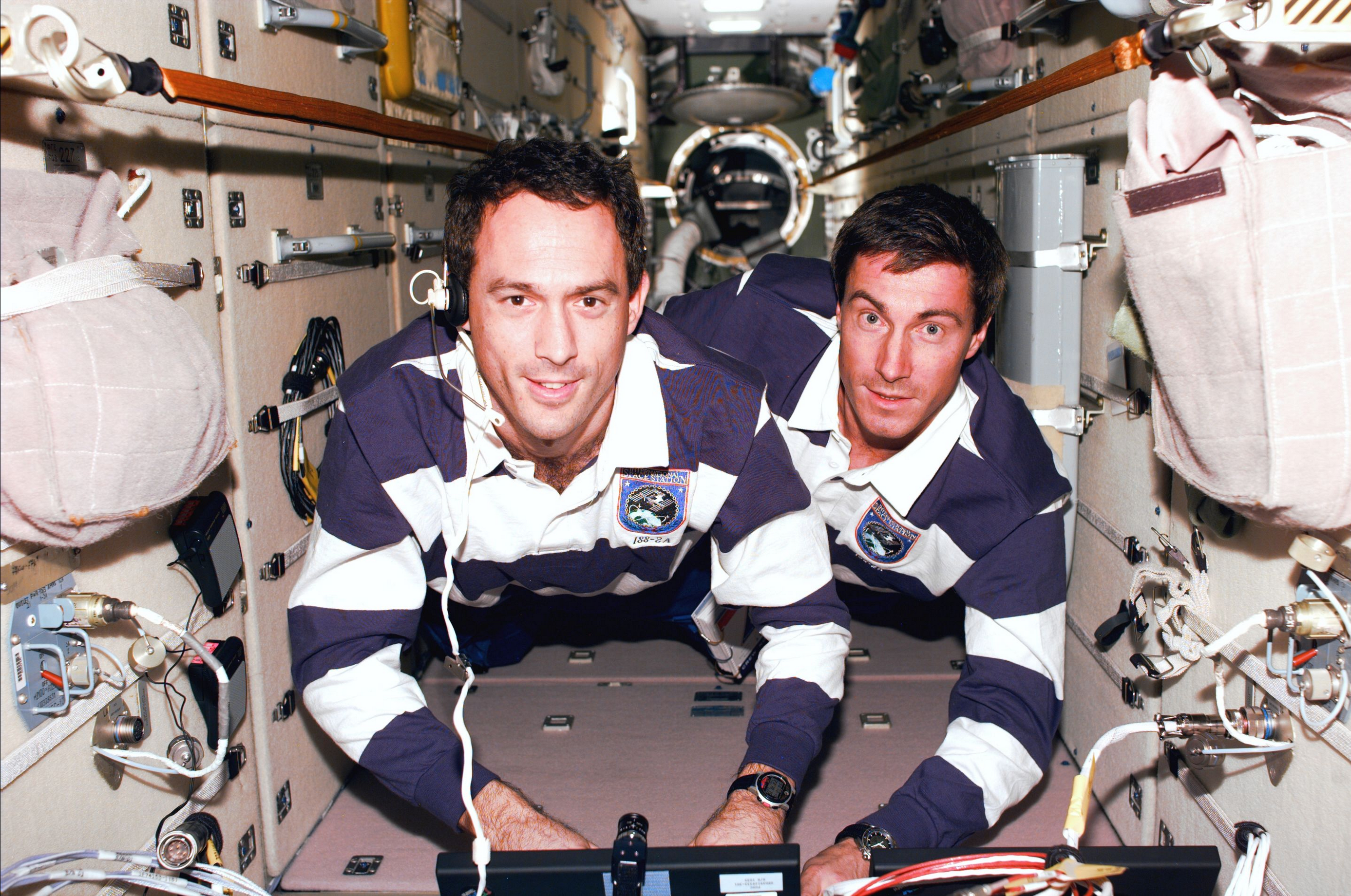
A call phone might be the answer. Many phones use OLED screens, meaning an app that sends your calendar to the watch with no extra hardware might be possible.
It might be possible, but that LED on a Notebook Adapter is really going crazy during a transfer. Consider that the original transfer was on a CRT monitor running 640 x 480 @ 60 Hz. The timing is really tight, so I’m going to be measuring in us (microseconds, 1/1,000,000th of a second). This means that…
This is the “electron gun on” time on the picture for a bit of data. Additionally, the CRT is one of the slower ways to transfer data to a watch. With the Notebook Adapter, the data transfer can be increased about 4x the speed without any transfer errors.
A fancy OLED phone can do 120 Hz updates to the screen. This means:
However, since OLED displays don’t have scan lines, this is the fastest this screen can “change states” from “on” to “off.” This also assumes the the entire OLED screen updates simultaneously in a perfect fashion without any artifacts that could cause issues (it probably does). This also assumes that the screen isn’t using PWM for brightness control, and doesn’t flicker (it probably does also).
So in a perfect world where this does work, if we compare possible CRT transfer times to OLED, ~8,333 us / ~35 us leaves us with a transfer speed that is about 240x slower than the CRT solution. This means that transfers that would take 10 seconds on a CRT would take 2,400 seconds, or 40 minutes on an OLED screen in perfect conditions.
There may be some wiggle room with this, like perhaps the “light on” and “light off” timings might be somewhat flexible. But even assuming we can fudge the timing to be off by 4x the calibrated amount, we’d still need 10 minutes to transfer something that would take 10 seconds on a CRT.
Very good info. Guess I hadn’t fully realized it was using scan lines to create infrared-level bandwidth (kilobits) out of a CRT. Very cool stuff.
Agreed! It’s fascinating 😁